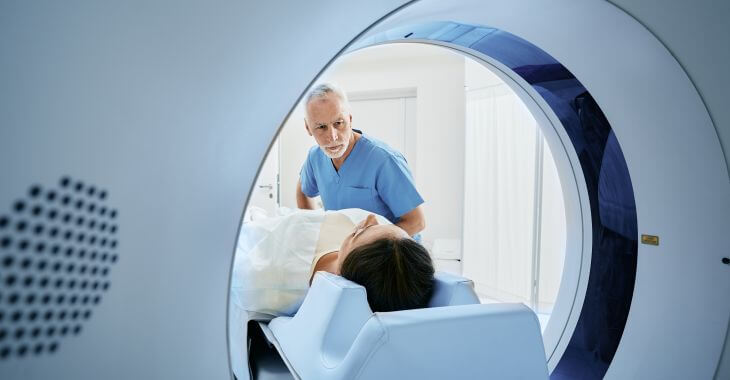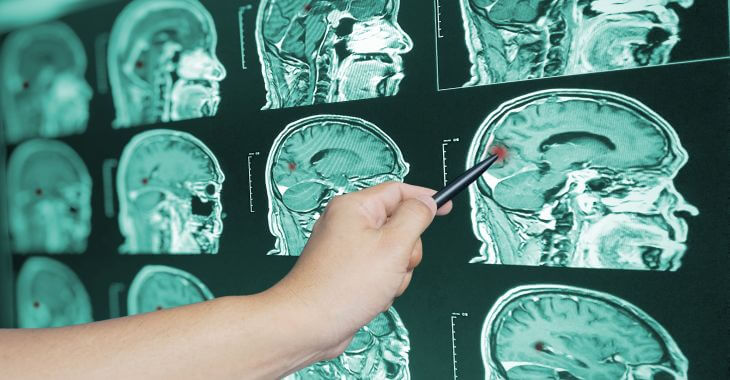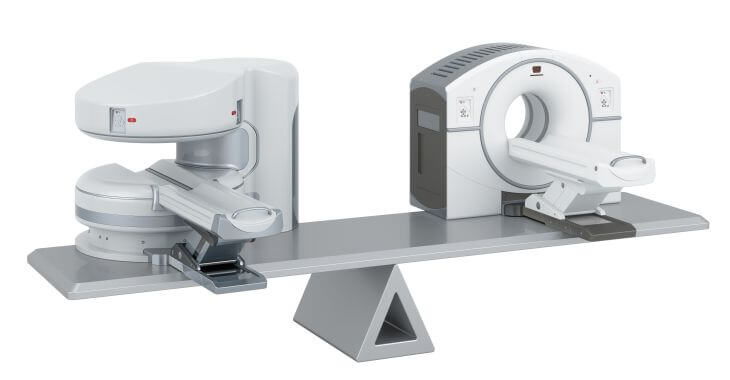PET Scan vs CT Scan: What Is the Difference?

Medical imaging has come a long way in the last few decades. While once x-rays with high amounts of radiation were the only imaging tools, now we have many more advanced options. Two of the most detailed are the PET scan and CT scans, which are valuable, but very different, diagnostic tools.
The advancements in medical imaging have relied heavily on computer systems. Both PET scans and CT scans require a computer to read and relay the imaging taken of tissues inside the body. However, what they can see and how they are performed determines which is used for each patient.
What Is a CT Scan?
A computed topography (CT) scan can create a 3D image of almost anything in the body. Unlike x-rays that are mostly used to see hard tissues like bones, CT scans can provide a 3D image of bones, muscles, organs and other structures in the body, making it very useful for diagnosing health conditions.
CT scans work by using radiation to take pictures of the inside of the body, similar to x-rays. However, the CT scanner takes many images from different angles, sometimes hundreds or more, that are sent to a computerized system. The images are organized to create a detailed 3D image of a specific area.
While CT scans can be used to take images of soft tissues, sometimes a contrast dye is needed to obtain clearer images. Some patients may need to drink a contrast dye for images of the digestive system or have dye injected into their veins for the nervous or cardiovascular system.
There are many benefits of a CT scan for diagnostic purposes. CT scans can be quickly performed in comparison to other advanced imaging like PET scans and MRIs. This makes them very useful for diagnosing injuries or disease in hospital or clinical settings.
What is a PET scan?
Positron emission tomography (PET) scans are another type of advanced imaging option for diagnosing and monitoring certain health conditions. These scans also use radiation and computers like CT scans, but are performed much differently.
A small amount of radioactive material is injected into the body during a PET scan. This radioactive tracer moves through the body and can be detected by a special camera or scanner. The tracer collects inside organs, tumors and cancer cells, which can allow detailed images of these areas.
Once the tracer is injected, it takes about an hour for it to reach the desired locations. Then pictures are taken and sent to a computer to create 3D images. These are very detailed images, especially useful for diagnosing and monitoring tumors and cancer, as well as monitoring heart and brain function.
While PET scans are very valuable for many detailed medical diagnostics, they are more time consuming. They also require that a small amount of radiation is left inside the body, which is not required with CT scans.
Can a CT Scan Detect Cancer?
Both CT scans and PET scans are used in cancer diagnosis. Since CT scans are used more frequently and take only a few minutes, many times the first signs of cancer are found on a CT scan. If cancer is suspected or detected, a PET scan may be ordered to receive a more detailed image.
CT scans are less detailed than PET scans and may not detect cancer in the earliest stages. However, it may detect an abnormality that may lead to a PET scan being performed. If cancer is suspected, a doctor may order both a CT scan and PET scan.
PET scans are able to detect cancer at earlier stages than CT scans or other types of images. CT scans can only see when changes have occurred in the body, such as a visible tumor or growth on an organ. PET scans are able to find and show cancer cells that are not visible in other imaging.
PET Scan vs CT Scan for Cancer Patients
Many cancer patients will receive both CT and PET scans during their treatment. Even though PET scans give a detailed image of tumors and cancer cells, CT scans can be combined with the PET images to give a larger scope and understanding of the cancer progression and treatment.
Which Imaging Is Better?
When it comes to PET scan vs CT scan benefits, each has its own. It is not a matter of one type being better than the other – it depends on what the physician is looking for and why the image is needed. CT scans are more for generalized diagnosis and PET scans are used to detect cancer at early stages.

Both PET scans and CT scans offer incredible medical benefits for detecting, diagnosing and monitoring disease. If you want to know more about why either test has been ordered or if you need both types of scans, talk to your doctor.
The information provided on this website, including text, graphics, images, and other materials, is intended solely for informational purposes and should not be used as a substitute for professional medical advice, diagnosis, or treatment.

)